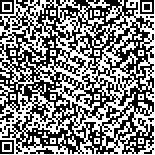| 引用本文: |
-
曹赢,付春正,薛伟,黄露,郭慧芳,郝睿祺,王玮,潘旭烨,ASEMAlireza,王荣蓉,郑珂,李卫东,张海恩,董现玲,朱霜,沈春阳.河北省黄骅市旧金山卤虫种群遗传多样性研究[J].广西科学院学报,2023,39(3):254-260. [点击复制]
- CAO Ying,FU Chunzheng,XUE Wei,HUANG Lu,GUO Huifang,HAO Ruiqi,WANG Wei,PAN Xuye,ASEM Alireza,WANG Rongrong,ZHENG Ke,LI Weidong,ZHANG Hai'en,DONG Xianling,ZHU Shuang,SHEN Chunyang.Research on Genetic Diversity of Artemia franciscana population in the Huanghua City, Hebei Province[J].Journal of Guangxi Academy of Sciences,2023,39(3):254-260. [点击复制]
|
|
| |
|
|
| 本文已被:浏览 328次 下载 428次 |

码上扫一扫! |
| 河北省黄骅市旧金山卤虫种群遗传多样性研究 |
|
曹赢1,2, 付春正3, 薛伟4, 黄露3, 郭慧芳1, 郝睿祺2, 王玮2, 潘旭烨2, ASEMAlireza2, 王荣蓉1, 郑珂1, 李卫东5,6, 张海恩5,6, 董现玲7, 朱霜8, 沈春阳1
|
|
|
| (1.承德医学院基础医学院, 河北承德 067000;2.海南热带海洋学院, 热带海洋生物资源利用与保护教育部重点实验室, 海南三亚 572022;3.承德医学院蚕业研究所, 河北承德 067000;4.河北石油职业技术大学, 河北承德 067000;5.唐山海都水产食品有限公司, 河北唐山 063000;6.河北省海水鱼产业技术研究院, 河北唐山 063000;7.承德医学院, 河北医工结合国际联合研究中心, 河北承德 067000;8.锦州奥鸿药业有限责任公司, 辽宁锦州 121013) |
|
| 摘要: |
| 旧金山卤虫(Artemia franciscana)于1991年被引入中国渤海湾地区后广泛传播。为探讨旧金山卤虫引入至河北省黄骅市后种群遗传多样性及种群遗传结构状况,本研究通过采集33个旧金山卤虫卵样品进行COⅠ基因扩增与测序,并与美国国立生物技术信息中心(NCBI)储存的两个旧金山卤虫美洲本土种群(大盐湖种群:29个样本;旧金山湾种群:37个样本)进行遗传多样性及种群遗传结构对比分析。结果表明,黄骅种群的核苷酸多样性(0.000 87)明显低于大盐湖种群(0.002 78)和旧金山湾种群(0.003 20),黄骅种群的平均核苷酸差异数(0.523)也明显低于大盐湖种群(1.680)和旧金山湾种群(1.946)。在单倍型分析中共产生9个单倍型类型,黄骅种群的单倍型多样性为0.324,明显低于大盐湖种群(0.475)和旧金山湾种群(0.480),且3个种群的主要单倍型类型并不相同。在3个种群的总遗传变异中,有61.04%的遗传变异来源于3个种群间的遗传变异,而仅有38.96%的遗传变异来源于各种群内个体间的遗传变异。因此本研究认为相对于旧金山卤虫大盐湖种群和旧金山湾种群,黄骅种群的遗传多样性相对较低,黄骅种群与大盐湖种群、旧金山湾种群存在显著的遗传分化,黄骅种群并非直接从大盐湖种群和旧金山湾种群引种、繁衍而成。 |
| 关键词: 旧金山卤虫 COⅠ基因 遗传多样性 种群遗传结构 单倍型分析 |
| DOI:10.13657/j.cnki.gxkxyxb.20230829.005 |
| 投稿时间:2023-05-19修订日期:2023-07-30 |
| 基金项目:河北省引进国外智力项目,河北省自然科学基金青年项目(C2020406016),承德医学院校级课题(202008)和河北省科技厅“技术创新引导专项科技工作会商”项目资助。 |
|
| Research on Genetic Diversity of Artemia franciscana population in the Huanghua City, Hebei Province |
|
CAO Ying1,2, FU Chunzheng3, XUE Wei4, HUANG Lu3, GUO Huifang1, HAO Ruiqi2, WANG Wei2, PAN Xuye2, ASEM Alireza2, WANG Rongrong1, ZHENG Ke1, LI Weidong5,6, ZHANG Hai'en5,6, DONG Xianling7, ZHU Shuang8, SHEN Chunyang1
|
| (1.School of Basic Medical Sciences, Chengde Medical University, Chengde, Hebei, 067000, China;2.Key Laboratory of Utilization and Conservation for Tropical Marine Bioresources, Ministry of Education, Hainan Tropical Ocean University, Sanya, Hainan, 572022, China;3.Institute of Sericulture, Chengde Medical University, Chengde, Hebei, 067000, China;4.Hebei Petroleum University of Technology, Chengde, Hebei, 067000, China;5.Tangshan Haidu Aquatic Food Co., Ltd., Tangshan, Hebei, 063000, China;6.Research Institute of Hebei Marine Fish Industry Technology, Tangshan, Hebei, 063000, China;7.Hebei International Research Center of Medical Engineering, Chengde Medical University, Chengde, Hebei, 067000, China;8.Jinzhou Aohong Pharmaceutical Co., Ltd., Jinzhou, Liaoning, 121013, China) |
| Abstract: |
| Artemia franciscana was widely spread after it was introduced into the Bohai Bay area of China in 1991.In order to explore the population genetic diversity and population genetic structure after the introduction of A.franciscana into Huanghua City, Hebei Province, 33 samples of A.franciscana eggs were collected, and the COⅠ gene was amplified and sequenced.The analysis of genetic diversity and population genetic structure was conducted combined with two local American populations of A.franciscana (29 samples from the Great Salt Lake population and 37 samples from the San Francisco Bay population) stored in the National Center for Biotechnology Information (NCBI) in the United States.The results showed that the nucleotide diversity of the Huanghua population (0.000 87) was significantly lower than that of the Great Salt Lake population (0.002 78) and the San Francisco Bay population (0.003 20).The average number of nucleotide differences (0.523) of the Huanghua population was also significantly lower than that of the Great Salt Lake population (1.680) and the San Francisco Bay population (1.946).In haplotype analysis, a total of 9 haplotype types were generated.The haplotype diversity of the Huanghua population was 0.324, which was significantly lower than that of the Great Salt Lake population (0.475) and the San Francisco Bay population (0.480), and the main haplotype types of the three populations were not the same.Among the total genetic variation of the three populations, 61.04% of the genetic variation was derived from the genetic variation among the three populations, while only 38.96% of the genetic variation was derived from the genetic variation among individuals within each group.Therefore, this study suggests that the genetic diversity of Huanghua population is relatively low compared with A.franciscana of the Great Salt Lake population and the San Francisco Bay population.There is significant genetic differentiation between the Huanghua population and the Great Salt Lake population and the San Francisco Bay population, and the Huanghua population is not directly introduced and reproduced from the Great Salt Lake population and the San Francisco Bay population. |
| Key words: Artemia franciscana COⅠ gene genetic diversity population genetic structure haplotype analysis |
|
|
|
|
|